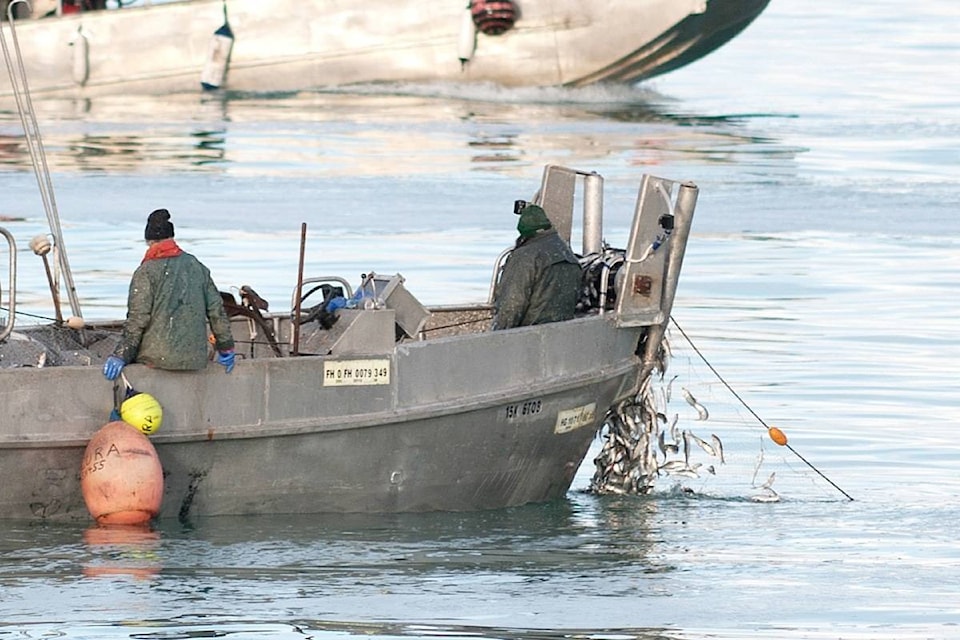It was another strong year for the local herring roe harvest — in line with a growing abundance of herring over the last decade that has led to “historic highs,” said the executive director of the Herring Conservation and Research Society, Greg Thomas.
The Nanoose Bay resident said the prediction for this year was 150,000 total tons of herring in the Strait of Georgia.
The numbers are provided by Fisheries and Oceans Canada, which assesses the strength of each year’s spawn, and sets the quotas for the following year. The quotas tend to be about 20 per cent of the total, said Thomas.
While some reports have said the herring quotas in the Qualicum Beach to Nanoose Bay area were caught quite quickly, Thomas said that, overall, “(Fishing companies) didn’t achieve their total allowable catch, however they did catch a substantial amount of fish.”
Nonetheless, about 20,000 tons of herring was taken out of the Strait of Georgia between late February to the end of March, he said.
This is “somewhat larger than recent years,” Thomas said of a harvest that had ranged from 13,000 to 15,000 tons in the last four years.
“In the five years prior, catches were less than 10,000 tons.”
This year, he said, “The quality was good, and I think in general, the fish and marine companies are happy with the product they got.”
The Strait of Georgia remains the strongest of the five herring stock areas on the B.C. coast.
“It’s difficult to say why this particular stock is sustaining at a higher level than the other stocks,” said Thomas, “but it is unique in that the Strait of Georgia is a unique ecosystem, and for some reason stock seems to be acting differently than, for instance, the stock on the West Coast of Vancouver Island, or the stock in Haida Gwaii.”
Though the results look strong, more precise numbers on the overall results of this year’s herring spawn won’t be available until next fall, said Brenda Spence, herring fishery manager with Fisheries and Oceans Canada. She and her team monitor the herring spawn every year from Salt Spring Island to north of Comox.
Flying along the coast to spot milt — herring seminal fluid — in the water, Spence’s team observed 54 miles of spawn. However, the intensity of the spawn in each area is determined by a dive survey that ultimately gives an indication of the abundance of herring spawn, and provides the basis for a prediction for next year.
Herring is important for the commercial fisheries as it provides employment during a time when other fisheries are inactive, said Spence.
“I know for our local French Creek Seafood, it really helps their workers and provides employment to local people,” she said.
The value of roe herring is determined by Japanese markets, which purchase the roe for consumption, as well as how much roe herring is available at any one time, said Spence.
“(Herring roe) used to be an incredibly high-value product and I’d say there’s been a dip in the value and then sort of a resurgence, so it really depends on the market.”
The herring spawn is also important to marine mammal populations, as well as seabirds that feed on the spawn, she said.
“It’s an important species for like the Brant geese, for example.”
